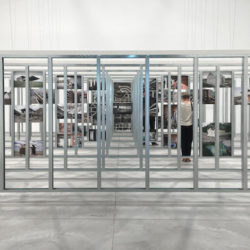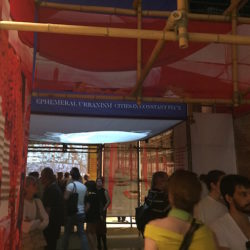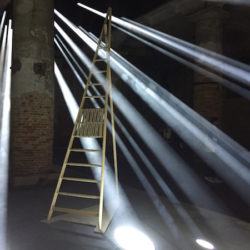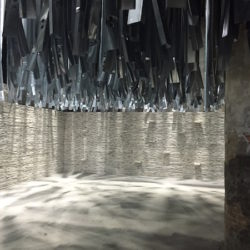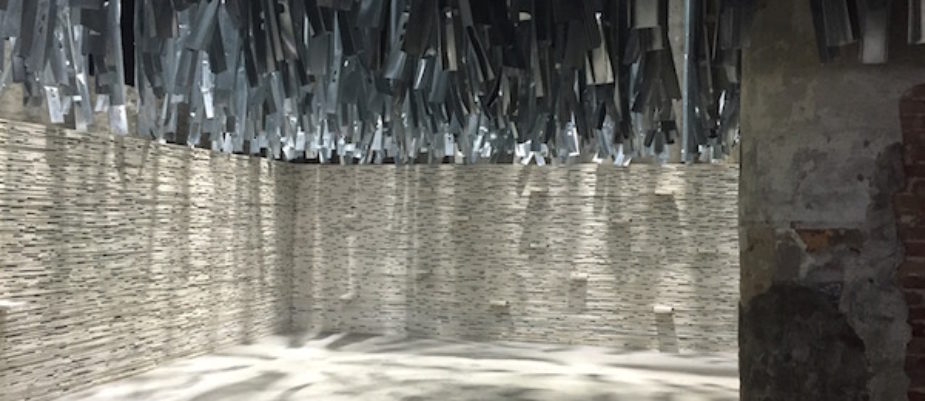
The Biennale Architettura by Alejandro Aravena is involved in social work, no spilling over into art and no hypertechnological visions, no “archistars” and no wow effects. Reporting from the Front doesn’t just show the fine and groundbreaking architecture you find in magazines, but a viewpoint conscious of the impoverished architecture of suburbs, made of scraps, unskilled labour, creativity coming from poverty. However, a strict view of the “politically correct” in all its faces sometimes revealing a sort of boring rhetoric.
The introductory rooms of the 15th Biennale Internazionale di Architettura, Reporting from the Front, at Arsenale is an actual declaration of intent the Aravena’s vision of the future of architecture and the first of the new imperatives for the architect: no waste. It was built with the 100 tons of waste material – 10,000 m2 of plaster board and 14 km of metal studs- generated by the dismantling of the previous Biennale Art 2015.
Obviously sustainability is a must, but what is interesting in this Biennale is that sustainability is a need for those who have no financial means, it’s an instrument for survival. Or maybe it’s just common sense – as stressed by Transsolar– carried out by complying with nature instead of opposing it, but most of all sustainable architecture has not only to cause less damage but also give more benefits, as Michael Braungert explains.
The use of raw and poor materials, and craps, is the unifying element of the project and fitting out and through architecture they try to help improving the quality of the environment and life even on that “Front” ruled by segregation, migrations, natural disasters, inequalities.
The challenge is to give an aesthetic nature to ugliness, to make a poor built area poetic, as the poor art of the sixties had already done, to generate emotions and positive relationship in the places of poverty and segregation.
The town becomes impermanent, the urbanism is inspired by nomadic models.
The ephemeral dimension coming the “Front” is a prerequisite for a sustainable, resilient, unfinished planning to fit in and change according to the people’s needs.
A lesson of humility that architecture should learn.
Some examples are the floating school “Waterfront” by Kunlè Adeyemi in Nigeria (rebuilt at Gaggiandre); Spain Pavilion “Unfinished”, winner of Leone d’Oro; the research by Rahul Mehrota exhibited at Arsenale devoted to the ephemeral city on the occasion of the Kumbh Mela religious celebration in India.

